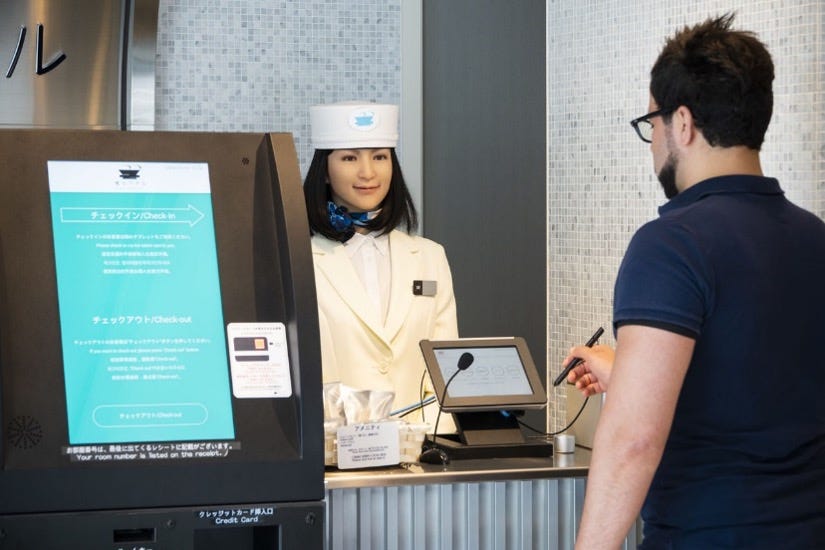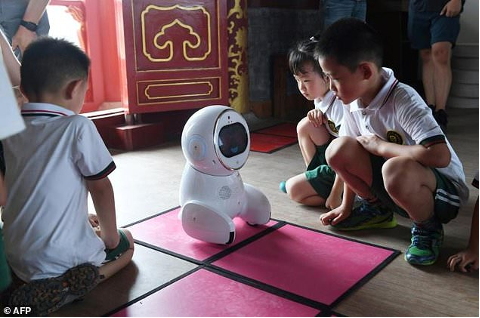By Dr Patrick Lee (views are the author’s own)
It is hard to believe robots are still under-used in schools in this day and age.
The Canadian doughnut franchise company Tim Hortons will soon be using the Automated Intelligent Digital Assistant AiDA, a robot, to take your order at the drive-thru (Bholla, 2021).
The robot is able to communicate with customers regardless of dialect, accent or what their order is.
The robtots are there to improve the experience of both customers and workers. AiDA understands an order, takes the customers’ request and then inputs it to the register automatically to help expedite the speed of service and the drive-thru.
The Henn-Na Hotel chain in Japan has been using robots at its front desks since 2018. The chain employs cutting-edge technology to offer customers a stress-free experience.
One of the Henn-Na hotels with 144 rooms was originally staffed with 40 employees. The increased use of robots at this hotel has reduced the used of human employees to seven (Fukiko, 2018). Henn-Na hotels deploy robot staff to greet you at the entrance and to serve customers at their front desk. These robots bow to greet visitors.
They even sneeze occasionally to give customers that human touch!
The check-in process at a Henn-Na Hotel is a breeze.
The robots guide the customers through the procedures. The customers speak their names and enter their phone numbers on touch panels. Customers then place their passport on a scanner. Lastly, the customers sign their names. Payment can be made in cash or credit card using the payment machine after which room keys are issued. Customers are catered for in English, Korean and Chinese.
Human staff are standing by if assistance is required.
Other robot staff at Henn-Na Hotel include the concierge and all are capable of simple conversation.
In China, Robot Teacher “Keeko” has been deployed in kindergartens since 2018.
Keekos are about 2 feet tall with a screen for a face. They are used in classrooms as teacher assistants.
They interact with students by telling stories and challenging them with logical questions. When a student answers the question correct, Keeko will respond with heart-shaped eyes (Lynch, 2019).
Keekos are definitely helping out in the classrooms by keeping very young students engaged in learning. Keekos are programmed with modern teaching methods so schools can get extra help in classrooms without hiring an additional teacher.
More than 10 years ago, I tried to install a simple robot (low cost) at the school entrance.
I wanted the robot to meet and greet new families.
That robot would have cost around US$2500. It would have served as a little gadget to give the school a tech savvy image.
Basically, a marketing tool.
However, these robots were not intended to replace employees but rather to enhance the school image and attract the attention of the students as well as parents. In the event, it just remained an idea of mine and we didn’t go ahead with the robot purchase.
However, the world has moved on since then.
Schools can now deploy robots as reception staff to meet and greet families and these robots can even provide a bit of human touch. Robot staff, teaching or non-teaching, is to me a very good investment. It will certainly catch the medias attention and it shows that you are investing in technology development at your school.
With all the downsides international education is currently experiencing, perhaps now is the time to add a little new and positive energy to your school – and some fun.
Bring on the robots!
By Dr Patrick Lee (views are the author’s own)
Patrick is an experienced educational Director with a demonstrated history of working in the education management industry. He is a Co-Founder of Whitehead, Lee & Associates, a consultancy providing expert advice and guidance to international schools.
Follow WLA on Facebook and LinkedIn.
INTERESTED IN INTERNATIONAL EDUCATION?
The Teacher’s Guide is getting around!
Seen here in Thailand with a happy reader. Grab a copy to take on your own adventure or listen to a short sample here (4 mins).










